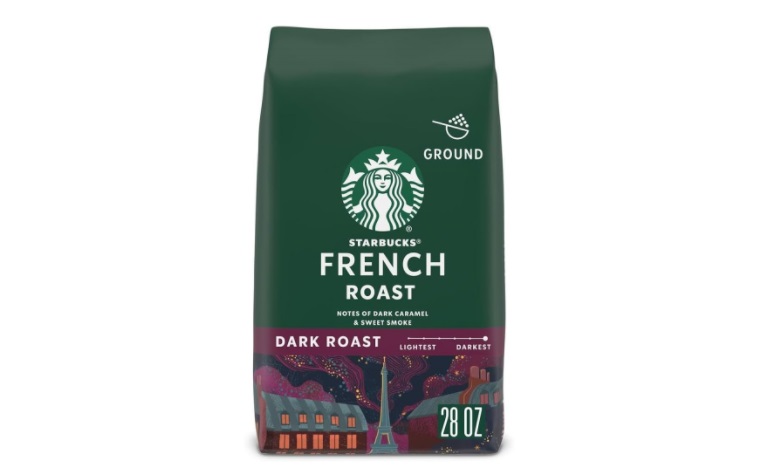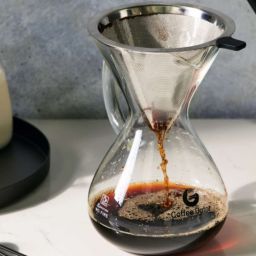
French Roast Ground Coffee stands out in the coffee world due to its distinct dark roast level. Known for its intense flavor, this coffee is roasted until the beans emit a second crack, marking a deep transformation that results in a rich, dark color with a shiny, oily surface. Unlike lighter roasts, French roast coffee offers a robust taste with significantly reduced acidity.
This makes it an ideal choice for those who prefer a hearty, less tangy coffee experience. The deep roasting process also gives French roast its characteristic smoky notes, which are savored by dark roast aficionados.
Key Takeaways about French Roast Ground Coffee
- Bold Flavor: Emphasizes smoky and charcoal-like flavors, often with a hint of bitterness that is appreciated by dark roast lovers.
- Appearance: The beans are dark brown, almost black, with a sheen from the oils released during the intense roasting process.
- Caffeine Content: Contrary to popular belief, French roast coffee has slightly less caffeine than its lighter roasted counterparts due to the extended roasting time.
- Acidity: The lengthy roasting process reduces the natural acidity found in the coffee beans, resulting in a smoother cup that is easier on the stomach.
- Versatility in Brewing: Excellent for use in a variety of brewing methods, particularly French press and drip coffee, which complement its flavor profile well.
The Roasting Process of French Roast Coffee
The roasting process of French Roast Coffee is what sets it apart from lighter roasts and contributes to its distinctive characteristics. The pivotal moment in creating French roast is reaching what’s known as the “second crack.” This stage occurs when the coffee beans are heated to a point where their cellular structure breaks down, releasing oils to the surface. This oil, visible on the beans, adds a shiny sheen and contributes to the coffee’s full-bodied flavor.
During the second crack, the beans emit a sound similar to popcorn popping, signaling that they have reached the peak of dark roasting. This stage also imparts a deep, dark color to the beans, almost bordering on black. The intense heat transforms the sugars and acids in the coffee, reducing its natural acidity and enhancing the smoky, almost burnt flavor that French roast is famous for. The result is a robust coffee that packs a punch with every sip, ideal for those who appreciate a strong, impactful coffee experience.
Comparing French Roast to Other Roasts
French roast coffee is often compared to other dark roasts like Italian and Spanish roasts. However, each has its unique properties. Italian roast coffee is typically roasted just a bit longer than French roast, making it slightly darker and oilier. This roast also has a stronger, more pronounced burnt flavor, which can overshadow the original flavors of the coffee beans.
Spanish roast goes even beyond the Italian roast, pushing the beans to their darkest limits. The beans are black, shinier due to the high oil content, and have a flavor that’s as close to pure char as you can get without burning the beans completely. This type of roast is less common and suited to those who crave an extremely bold coffee experience.
In contrast, lighter roasts such as light city or cinnamon roast preserve more of the original flavors of the coffee bean, including floral, fruit, and berry notes. These roasts are much lighter in color, higher in acidity, and the beans do not exhibit any oil on their surface, offering a stark contrast to the dark, oily appearance of French roast.
Best Practices for Brewing French Roast Ground Coffee
When it comes to brewing French Roast ground coffee, the goal is to extract its full, bold flavors without overshadowing its inherent qualities. A French press is often considered the best method for doing just this. To start, use one tablespoon of coffee per four ounces of water, adjusted to taste. The water should be just below boiling, around 200°F, to avoid burning the coffee, which can enhance unwanted bitterness.
Pour the water over the grounds in the French press, ensuring all the coffee is fully saturated. Let the coffee steep for about four minutes before pressing down the plunger slowly. This method allows the coffee’s oils and fine particles to remain in the brew, enhancing the richness and depth of flavor that French roast is known for.
Other effective methods include using a drip coffee maker with a permanent filter or a pour-over setup with a thick filter to manage the oils and fine particles effectively. Each method extracts the coffee’s robust flavors slightly differently, so experimenting to find your preferred technique is key.
Sustainability and Sourcing of French Roast Coffee
Sustainability and ethical sourcing are significant considerations in the coffee industry, especially for French Roast varieties. Many brands, including Starbucks, have committed to responsible sourcing practices that focus on environmental stewardship and fair compensation for farmers. These practices are designed to ensure the long-term health of the coffee plantations and the communities that depend on them.
For instance, Starbucks follows its C.A.F.E. Practices standards, which evaluate the economic, social, and environmental aspects of coffee production. Other brands might partner with certifications like Fair Trade or Rainforest Alliance to promote similar goals. These certifications help consumers identify products that support sustainable farming practices, which in turn contributes to a more stable and sustainable coffee supply chain.
Health and Caffeine Content in French Roast Coffee
There’s a common misconception that darker roasts like French Roast contain more caffeine than lighter roasts. In reality, the opposite is often true. The longer roasting process used to achieve the deep, dark color of French Roast coffee actually breaks down some of the caffeine content.
Consequently, French Roast may have slightly less caffeine per bean compared to lighter roasts. However, because darker roasted coffees have a more intense flavor, they are often brewed stronger, potentially balancing out the caffeine difference depending on how much coffee is used per cup.
FAQs
What is the difference between French roast and other dark roasts?
French roast is known for its dark, smoky flavor, with the beans roasted until they begin to release oils on the surface. It is typically darker than most dark roasts but not as dark as Spanish or Italian roasts, which are taken just to the edge of being burnt.
What are the ideal brewing techniques for French roast?
A French press is highly recommended for brewing French roast coffee as it allows the oils and full flavor of the coffee to be extracted. Other effective methods include drip brewing with a permanent filter or a pour-over method with a thick filter.
How should I store French roast coffee to maintain its freshness?
To keep French roast coffee fresh, store it in an airtight container away from direct sunlight and heat. It’s best to buy whole beans and grind them just before brewing to preserve the flavor and aroma.
Final Thoughts
French Roast Ground Coffee is celebrated for its intensely smoky and bold flavor profile. The roasting process plays a crucial role in defining its unique taste and lower acidity. For those who enjoy a robust cup of coffee, following best practices in brewing and storage can significantly enhance the experience.









